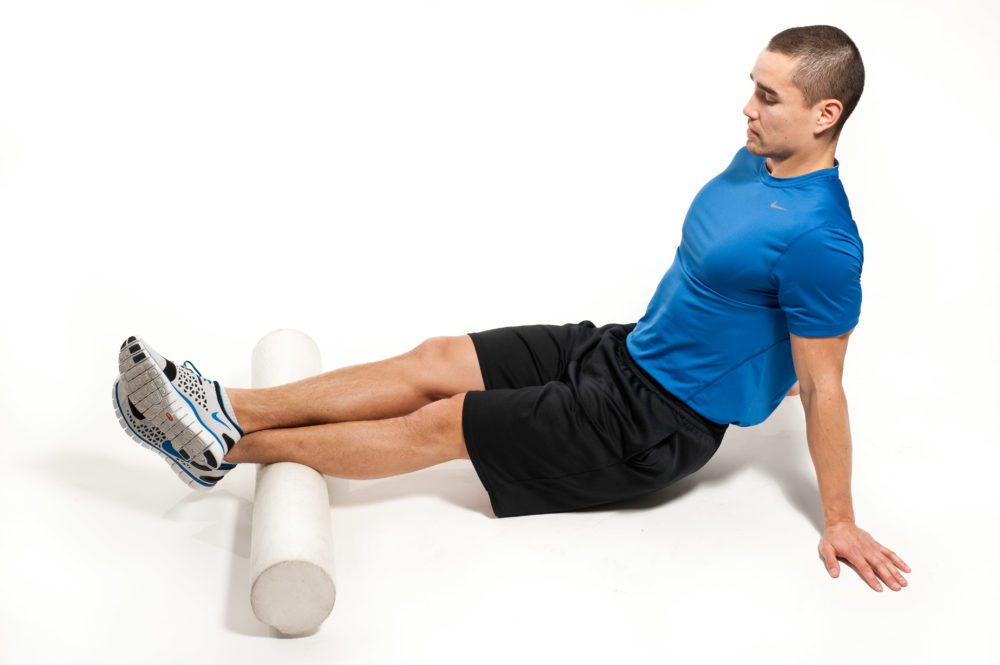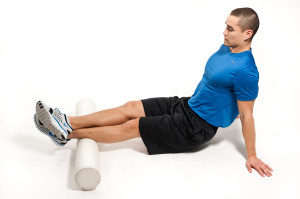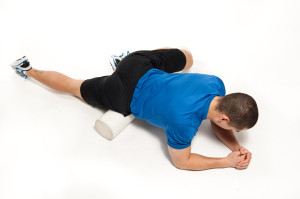Breaking down foam rolling and self-massage

By: Jon-Erik Kawamoto
Self-massage devices of varying shapes and sizes are becoming quite common among the running community. Referred to as foam rolling or self-myofascial release, self-massage is proclaimed to reduce muscle fatigue and tightness, improve flexibility, speed up recovery, promote feelings of relaxation and enhance performance. However, there is little empirical evidence to support these claims. Is it all hype or does this actually work?

Self-massage with a foam roller, roller stick or spherical object attempts to mimic a manual therapy technique called myofascial release therapy, which aims to reduce muscle and tissue restrictions found in tissue called fascia. The areas of tightness are commonly referred to as trigger points and are highly sensitive nodules found within tight bands of muscle. Resulting from unnecessary firing of the muscle spindle, a reflex loop sends signals from the spinal cord to the muscle, telling it to contract in spasm in a localized area. Pain will often be felt when muscles containing trigger points are contracted, but not always.
Trigger points are areas of increased energy consumption with a lowered oxygen supply because of inadequate local circulation, diagnosing their presence requires satisfying a checklist of conditions. Trigger points can increase muscular fatigue and reduce muscle-resting length because the muscle can be held in a shortened position. Thus, trigger points may negatively affect athletic performance either by contributing to a higher sensation of fatigue or reducing optimal joint range of motion.
A host of factors may contribute to painful and sensitive muscles, such as incorrect movement patterns, compensation patterns, poor daily postural habits, activity and/or lack of activity. Not surprisingly, it’s difficult to pin-point the cause most times.
Foam Rolling Research
Research looking at foam rolling is sparse and most of the self massage claims are extrapolated from research involving massage provided by a manual therapist. In a recent study in the Journal of Strength and Conditioning Research, an acute bout (only two minutes) of foam rolling was found to improve knee joint range of motion with no detriments to knee extensor performance (isometric force, or amount of muscle activation). These results show that foam rolling may be beneficial if performed prior to activities that require optimal range of motion that also involve high force production, such as racing and fast track workouts.
Foam Rolling Technique

Several techniques can be performed with self-massaging devices, but basically, a runner sandwiches a tight or tender muscle in between their body mass and a foam roller or spherical object. Effleurage massage is a technique that uses a smooth gliding motion over the skin, which aims to soothe sore muscles, relax the athlete, increase tissue temperature and increase local circulation. Extrapolating this to foam rolling, this would be similar to rolling the entire length of a muscle in a slow and controlled fashion. Similar to a friction massage from a practitioner, the athlete can use a spherical object to stroke parallel or transversely across a muscle aiming to induce a local inflammatory response, break down scar tissue and adhesions, reduce muscle spasms and increase local circulation.
Also, runners can trigger point a tight area by placing the foam roller on a tender spot and try moving the joint involved through a full range of motion. This simulates active-release treatment performed with a practitioner and attempts to restore the sliding surfaces by using movement to unglue mechanical restrictions.
In addition to placing direct pressure over the surface of a muscle, rolling also stretches the tissues and generates friction and heat. Warming and stretching the muscle and fascia is thought to change the state of the fascia while breaking up fibrous adhesions, thus, restoring tissue and muscle extensibility. Also, because fascia is densely innervated by four different types of mechanoreceptors, which sense manual pressure, stimulating these receptors have been associated with lowering sympathetic nervous system tonus as well as change tissue viscosity.
The Take Home Message
Optimal self massage duration, pressure, technique (rolling vs. constant tension) and timing haven’t been solidified yet in the literature, however, this technique seems to be promising at improving tissue extensibility without negatively influencing muscle performance. This may help prevent injuries by freeing soft tissues from restrictions and help maintain optimal joint mobility.
From experience, for best results in improving your tissue mobility and reducing your injury risk, follow these foam rolling guidelines:
- Don’t cause intense pain – it will be uncomfortable but stop if it is too much.
- Use the three techniques discussed in this article throughout the week. Implement short session before your runs and races and longer sessions during the evenings.
- Roll slowly and deliberately and make sure to keep the muscle being rolled completely relaxed. Do not tense up!
- Pause on sensitive spots until the pain dissipates.
Sample Foam Rolling Exercises
Calf Rolling – Sit on the floor with your legs crossed over a foam roller. Hold yourself up on your hands and slowly move your body forward and backward as you exert pressure over your bottom leg.
Hip Flexor Rolling – Lie face-down with a foam roller or spherical object beneath the front of your hip. Slowly move your body forward and backward as you exert pressure over the front of your upper thigh.
Jon-Erik Kawamoto, CSCS, CEP, is a strength coach, personal trainer and owner of www.StrongerRunner.com.


